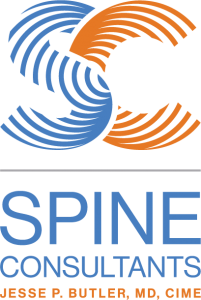Disc herniation in the lumbar spine is treated using microdiscectomy, also called lumbar microdecompression. In most cases, spine surgeons perform a lumbar microdiscectomy surgery for patients experiencing discomfort in their feet and back (sciatica). This helps ease pressure on the spine and the legs and allows time for a rapid recovery.
What is a Lumbar Microdiscectomy?
A lumbar microdiscectomy treats pain and other symptoms caused by herniated discs pressing on nearby nerve roots in the spine. The procedure involves cutting away tiny pieces of ligament, bone, and disc to release the nerve. The open approach involves a large incision and muscle retraction, which allows the surgeon to see the area directly.
This surgery enables a patient to return to their normal daily activities and reduce or eliminate leg pain. It is typically successful at eliminating leg pain, though any accompanying back pain should improve as well.
Who is Eligible for a Lumbar Micro-Decompression?
A lack of relief from irritation and weakness in the feet and legs may require surgery. A lumbar discectomy may be necessary if you have trouble controlling your bladder or bowels. Patients with the following conditions may also benefit from a posterior lumbar discectomy:
Disc herniation
A weakening in the disc wall can allow the cushion-like content in the disc to bulge or rupture. It causes pain and swelling whenever this material pushes out and painfully presses on a nerve.
Degenerative discs
The natural aging of discs leads to bone spurs, and inflammation of facet joints leads to bone spurs. When discs become dry and shrink, their cushioning properties and flexibility are lost. There is a reduction in disc size, resulting in spinal stenosis and disc herniation.
How Does a Surgeon Perform a Lumbar Decompression Surgery?
This surgery is generally performed through a small incision in the back. Muscles are retracted to give the surgeon access to the spine. Based on what is causing the pressure on the nerve, a portion of the facet joint may be removed or a laminotomy may be performed. A laminotomy creates a small opening in the lamina. This allows the surgeon access to the disc space and nerve root. Disc fragments, bone spurs and other irritants are removed so the nerve root can be free from compression. After all fragmented disc material has been removed, the muscles will be put back into place and the incision will be closed.
Recovery from a Lumbar Micro-Decompression
A few hours after lumbar microdiscectomy, most patients are discharged from the hospital. Typically, patients recovering from lumbar microdiscectomy are discouraged from bending, lifting, or twisting for six weeks to prevent a reherniation of the disc.
The key to successful pain management is following the surgeon’s instructions regarding medications, activity limitations, and walking. Within two weeks of surgery, the surgeon may recommend light activity and driving. It may take six weeks for routine pursuits like work, school, and hobbies to be resumed. Hard work or contact sports can be resumed after 12 weeks or more. The surgeon may also prescribe pain management medications and ice and heat therapy to ease discomfort during your recovery.
Find out If Lumbar Micro-Decompression is Right for You
Pre-surgical screening and evaluation, and patient commitment to recovery after surgery, are key to the success of a lumbar microdiscectomy. If you are experiencing leg pain or numbness and believe you are a candidate for Lumbar Micro-decompression, schedule an appointment with Dr. Butler.

